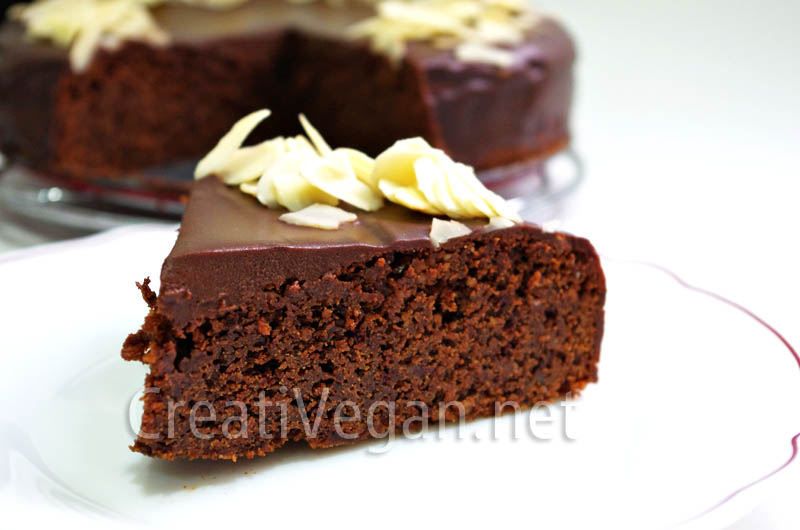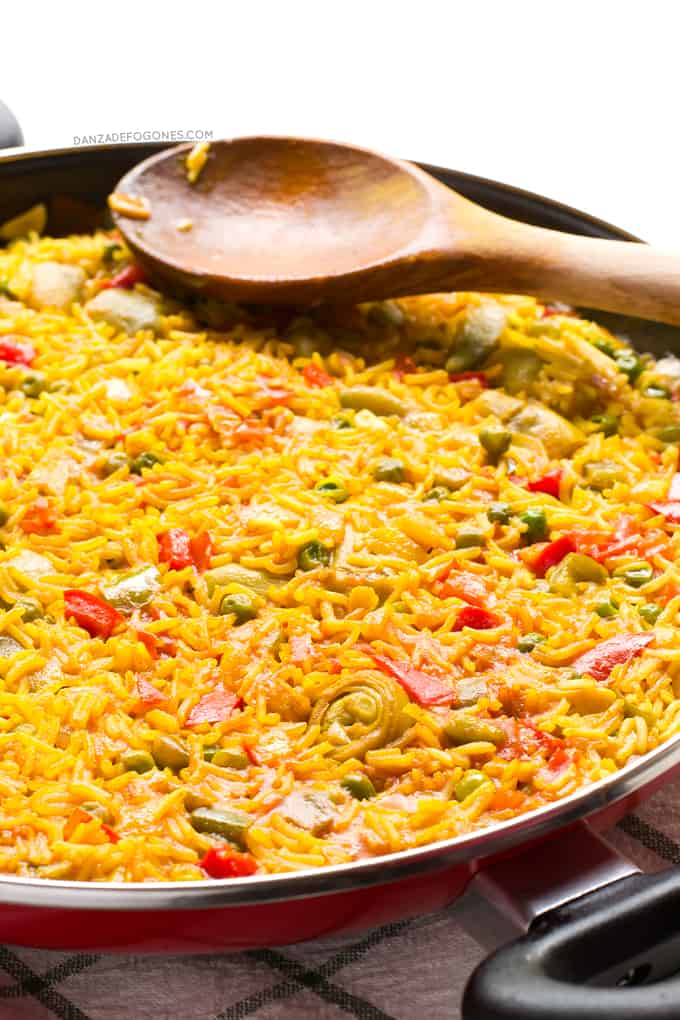
Tiempo de preparación: ~1 hora + tiempos de enfriado
Raciones: para 6-8 personas
Ingredientes:
♥ 85 g de chocolate sin leche para repostería (~56% de cacao)
♥ 30 g de chocolate negro sin leche (~75% de cacao)
♥ 1 cucharada de extracto de café
♥ 2 cucharadas de leche de soja
♥ 1/3 de taza de harina de almendras (almendra molida)
♥ 1/2 taza de harina de repostería (harina para bizcochos y tartas)
♥ 1 cucharadita y 1/2 de levadura de repostería
Mezcla 1:
♥ 90 ml de leche de soja
♥ 130 ml de aceite de girasol
♥ 5 cucharadas de azúcar
Mezcla 2:
♥ 2 cucharaditas de almidón de maíz (maizena)
♥ 1 cucharadita y 1/2 de almidón de tapioca
♥ 2 cucharadas de azúcar
♥ 1/4 de cucharadita de cremor tártaro
♥ 3 cucharadas de agua fría
Cobertura:
♥ 60 g de chocolate sin leche para repostería (~56% de cacao)
♥ 10 g de chocolate negro sin leche (~75% de cacao)
♥ 1 cucharada de extracto de café
♥ 1 cucharada de margarina vegetal
♥ 1 cucharada de azúcar glacé
♥ 30 ml de leche de soja
♥ almendras laminadas para decorar
Necesitarás además un molde redondo para tartas (preferiblemente desmontable) de 20 cm de diámetro y una batidora de brazo (preferiblemente regulable) con accesorio de varillas (normal o montaclaras).
Lee toda la receta, incluyendo anotaciones y toda la explicación, antes de empezar a hacerla.
Precalienta el horno a 180ºC.
Unta muy ligeramente todo el interior del molde con margarina vegetal y espolvoréalo con harina. Golpéalo boca abajo para eliminar el exceso de harina.
Mezcla 1: Pon en un vaso para batidora de brazo la leche de soja con el azúcar y bátelo a velocidad media durante 1 minuto. Agrega poco a poco el aceite de girasol para crear una emulsión (como una mayonesa vegetal dulce). Cuando esté hecha, ponla en un bol grande donde haremos toda la masa de la tarta.
Mezcla 2: En el mismo vaso en el que hemos hecho la emulsión (bien limpio y seco) o uno parecido, pon los almidones y el agua. Bátelo con el accesorio de varillas de la batidora a velocidad media durante 2 minutos y después súbelo al máximo. Agrega el cremor tártaro y sigue batiendo. Después, el azúcar, y bátelo 2 minutos más. La mezcla debe quedar densa y con burbujitas. Resérvala.
Derrite en un cacito pequeño a fuego lento o al baño maría el chocolate para repostería con el chocolate negro sin leche (partidos en trocitos) y la leche de soja, removiendo suavemente. Cuando se haya derretido agrega el extracto de café, mézclalo y apártalo del fuego.
Pon en la batidora de nuevo el accesorio de varillas. Bate a velocidad media la emulsión que habíamos hecho al principio, en un bol mezclador grande. Vierte poco a poco y sin dejar de batir el chocolate derretido (puedes ayudarte con una espátula de silicona para rebañar bien todo el cazo). Después, poco a poco, la harina de almendras, la mezcla de almidones y por último la harina de repostería mezclada con la levadura. Bate toda la mezcla 1 minuto más a velocidad alta y viértela en el molde.
Mételo al horno a altura media (en el centro), con calor arriba y abajo (sin ventilador) y deja que se haga a 180ºC durante 30 minutos. Tras ese tiempo apaga el horno y deja el bizcocho dentro 10 minutos más, sin abrir la puerta del horno.
Sácalo y déjalo enfriar sobre una rejilla. No lo saques del molde hasta que esté frío. Cuando se haya enfriado déjalo en la nevera.
Para decorarlo, pon en un cacito a fuego lento o al baño maría todos los ingredientes de la cobertura (excepto las almendras) y derrítelos removiendo suavemente. Apártalo del fuego y deja que se enfríe un poco en un lugar fresco (no lo metas en la nevera).
Dale una primera capa al bizcocho con 3 o 4 cucharadas de cobertura, extendiéndolas muy bien por la superficie y los lados, con una espátula. Mételo en la nevera 5 minutos.
Sácalo y pon el resto de la cobertura, poco a poco, alisando bien los bordes, y termina la presentación con las almendras laminadas. Deja la tarta en la nevera para que termine de solidificar el chocolate.


